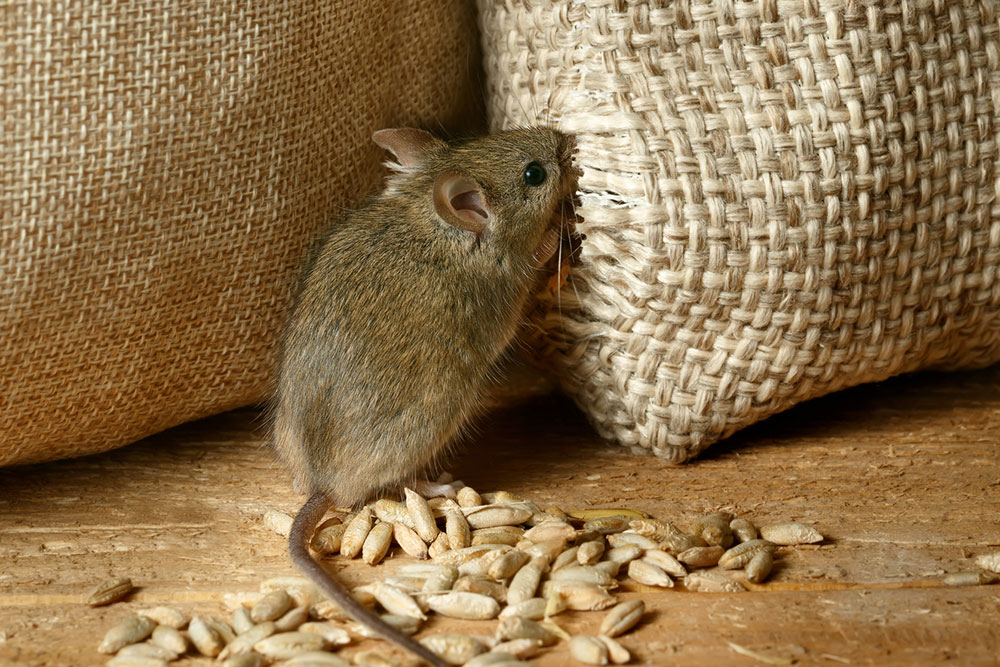Here’s How to Get Rid of Voles
For those with gardens, one of the most common hassles is dealing with pests. While some insects and worms are helpful to have around the garden, certain pests can harm the plants. Among them are voles—small, stout rodents. They can quickly wreak havoc in lawns, gardens, orchards, and even golf courses if they stay undetected.
What are voles?
Voles are often confused with another common garden pest—moles. The confusion mostly arises from the similar-sounding name and the matching tunneling behavior.

Voles are herbivore rodents that are related to lemmings and hamsters and look similar to regular mice. Often called meadow or field mice, voles usually have dense fur that appears black, brown, or gray. Adult voles are often 5 to 8 inches long. Voles are known to breed at any time of year, with the peak breeding season being summer and spring. At this time, they begin to reproduce, leading to a huge vole infestation pretty quickly. While the average lifespan of a vole is about 6 months to a year, the infestation can cause some serious damage in a short time.
How to get rid of voles
Check for signs
Identifying signs of damage is the first step toward getting rid of voles quickly. Usually, voles create a widespread network of several shallow underground tunnels, which are about 2 inches wide. While the voles mostly remain unseen, the best way to detect their presence is by looking for burrow openings above the ground. These would be connected to well-used runways, which are generally hidden by grass or groundcovers. Around these burrows, voles cause damage to plants by eating the roots, bulbs, leaves, and stems. They often leave behind dead patches in lawns when they start feeding in the grass. Here are some of the signs of vole damage:
– Vole droppings
– Fresh trails with clipped or trampled grass
– Plants that suddenly start to wilt or die
– Gnaw marks on garden plants, vegetables, and around the base of trees and shrubs
– Extensive damage to tree roots causing dieback of the crown and leaning
Try common vole removal methods
There are many ways to deal with voles. The effectiveness of these options will depend on factors such as the size of the property, vole population, time of the year, and weather. Nevertheless, here are a few common tips to get rid of voles quickly:
Traps: To get rid of voles, start by setting up snap traps or live traps. Placing these along the runways and tunnels dug by the voles can help in capturing them and removing them from the property. But before releasing them, one should make sure to read through the local regulations on releasing wildlife, as laws vary from state to state. Also, one should make sure not to relocate the voles to someone else’s yard.
Repellents: Different types of repellants can be used to make the voles come out of their hiding spots and move away from the property. Some common types of natural repellents include the following:
– Predator urine, such as coyote or fox urine, which can be found at supply stores or online
– Garlic-based homemade sprays that can be sprayed on the affected areas
– Hot pepper sprays that can be used around the runways, tunnels, and affected areas
– Castor oil sprays can be used on the plans targetted by the voles
– Planting fragrant herbs such as mints can hide the scent of other attractive plants
Fencing: A humane method to get rid of voles is building physical barriers around trees and plants. A good fence made of rolls of a quarter-inch mesh wire secured with stakes can protect the roots and bulbs from damage. As voles are diggers, the fence must be buried at least a foot into the soil. Besides, these pests are often too lazy to climb, so a fence that is at least a foot tall above the ground can do the job. The fences can be installed around individual trees and plants as well as around the entire perimeter of the garden or lawn.
Protecting the bulbs: Voles are usually attracted to bulbous plants. So, another way to deter them is to restrict their access to these plants. This can be done by adding a layer of gravel to the soil surrounding these plants. Apart from this, moving these plants into baskets made with poultry netting can also help.
Modify the habitat: Some types of plants are more toxic to voles than others. Planting these alongside the ones that these pests find attractive is a good way to keep them away. For example, one can plant daffodils, castor beans, alliums, snowdrops, and fritillaries, as they are unappealing and, at times, dangerous for voles. So, the plants can naturally keep voles at bay.
Call in professionals: When the vole infestation has become too severe and widespread, it is best to engage the services of professional pest controllers. Besides, DIY control methods may not work in such situations. Further, to prevent extensive damage to the trees and plants, professionals can set up traps, use stronger repellants, and take other measures to prevent vole infestation in the future.